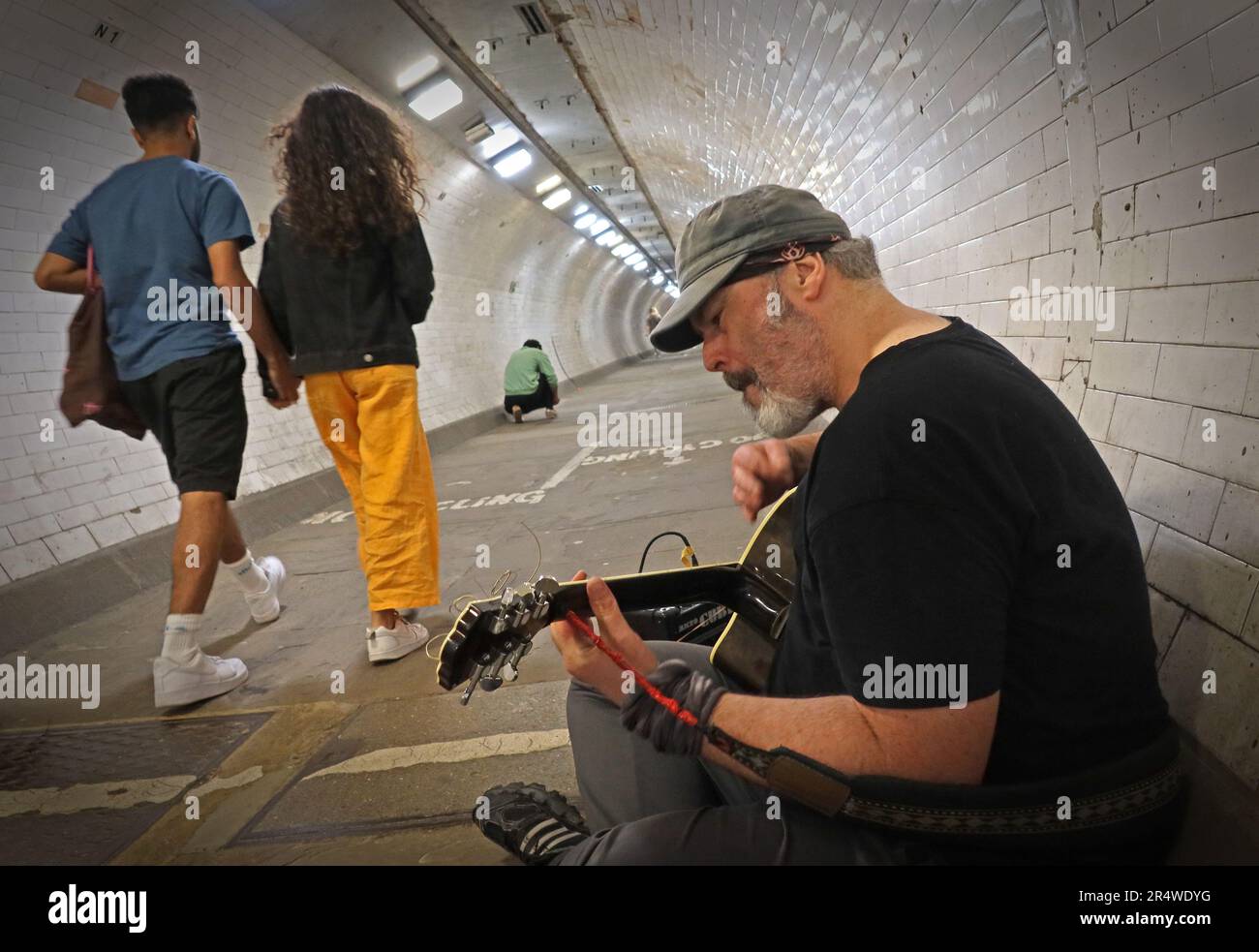Busker in the Greenwich Thames foot tunnel, entertaining walkers going from Greenwich to the Isle Of Dogs, east London, England, UK, SE10 9HT

Image details
Contributor:
Tony Smith / Alamy Stock PhotoImage ID:
2R4WDYGFile size:
49 MB (1.4 MB Compressed download)Releases:
Model - no | Property - noDo I need a release?Dimensions:
4992 x 3432 px | 42.3 x 29.1 cm | 16.6 x 11.4 inches | 300dpiDate taken:
20 May 2023Location:
Greenwich, London, England, UK, SE10 9HTMore information:
The Greenwich Foot Tunnel crosses beneath the River Thames in East London, linking Greenwich (Royal Borough of Greenwich) on the south bank with Millwall (London Borough of Tower Hamlets) on the north. Approximately 4, 000 people use the tunnel each day. It opened in 1902. The tunnel was designed by civil engineer Sir Alexander Binnie for London County Council and constructed by contractor John Cochrane & Co. The project started in June 1899 and the tunnel opened on 4 August 1902. The tunnel replaced an expensive and sometimes unreliable ferry service allowing workers living south of the Thames to reach their workplaces in the London docks and shipyards in or near the Isle of Dogs. Its creation owed much to the efforts of working-class politician Will Crooks, who had worked in the docks and, after chairing the LCC's Bridges Committee responsible for the tunnel, later served as Labour MP for Woolwich. The section of the tunnel that was repaired following damage during World War II The entrance shafts at both ends are beneath glazed domes. Lifts, installed in 1904, were upgraded in 1992 and again in 2012, and helical staircases allow pedestrians to access the tile-lined tunnel, which slopes gently from both sides down to a midway lowpoint beneath the river. The cast-iron tunnel is 1, 215 feet (370.2 m) long, 50 feet (15.2 m) deep and has an internal diameter of about 9 feet (2.74 m). The cast-iron rings are coated with concrete and surfaced with some 200, 000 white glazed tiles. The northern end was damaged by bombs during the Second World War and repairs included a thick steel and concrete inner lining that substantially reduces the diameter for a short distance. The northern shaft staircase has 87 steps; the southern one has 100.